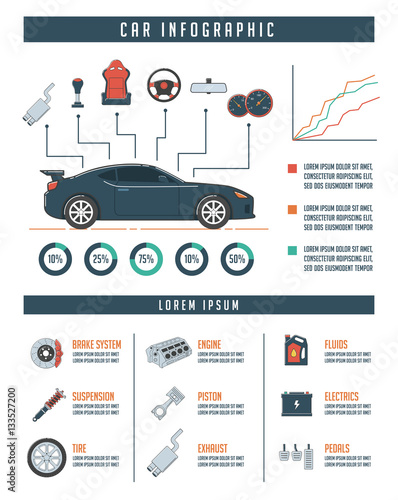Understanding Your Car'S Warning Lights: What Do They Really Mean?
Understanding Your Car'S Warning Lights: What Do They Really Mean?
Blog Article
Web Content Composed By-Higgins Corbett
When you're behind the wheel, those beautiful caution lights on your control panel can be a little bit perplexing. Do you understand what they're attempting to tell you about your car's health? Recognizing the importance of these lights is vital for your safety and security and the long life of your vehicle. So, the next time one of those lights pops up, wouldn't you want to decode its message properly and take the essential steps to resolve it?
Common Warning Lighting and Interpretations
Recognize common caution lights in your auto and understand their definitions to make sure secure driving.
The most common warning lights include the check engine light, which signals concerns with the engine or exhausts system. If this light begins, it's essential to have your automobile inspected without delay.
The oil stress cautioning light indicates low oil stress, calling for immediate focus to avoid engine damage.
A flashing battery light might suggest a damaged charging system, possibly leaving you stranded otherwise attended to.
The tire pressure monitoring system (TPMS) light alerts you to reduced tire stress, impacting lorry security and fuel performance. Overlooking this could result in dangerous driving conditions.
The abdominal light shows a problem with the anti-lock stopping system, compromising your ability to quit promptly in emergency situations.
Lastly, the coolant temperature level cautioning light warns of engine overheating, which can cause severe damage if not fixed promptly.
Understanding these common warning lights will certainly aid you address issues promptly and keep risk-free driving problems.
Significance of Prompt Attention
Recognizing the typical warning lights in your auto is only the very first step; the value of without delay addressing these cautions can't be emphasized enough to guarantee your safety and security on the road.
When a warning light brightens on your control panel, it's your vehicle's method of communicating a potential concern that needs focus. Overlooking these cautions can cause extra severe problems later on, jeopardizing your security and potentially costing you extra in repairs.
Trigger interest to alerting lights can stop break downs and mishaps. For example, a flashing check engine light might show a misfire that, if left unattended, might cause damages to the catalytic converter. Resolving this promptly can save you from an expensive repair work.
Likewise, clean car interior alerting light might signal reduced brake liquid or used brake pads, vital elements for your safety when driving.
DIY Troubleshooting Tips
If you notice a caution light on your dashboard, there are a few do it yourself fixing suggestions you can attempt before seeking expert assistance.
car engine wash service is to consult your auto's guidebook to recognize what the certain warning light indicates. Often the issue can be as straightforward as a loose gas cap causing the check engine light. Tightening the gas cap may solve the trouble.
Another common issue is a low battery, which can cause different advising lights. Examining the battery connections for deterioration and guaranteeing they're secure might fix the trouble.
If a caution light persists, you can attempt resetting it by detaching the cars and truck's battery for a couple of mins and after that reconnecting it. Additionally, inspecting your vehicle's liquid degrees, such as oil, coolant, and brake fluid, can help fix warning lights connected to these systems.
Final thought
To conclude, understanding your vehicle's caution lights is crucial for maintaining your automobile running smoothly and safely. By quickly addressing https://jasperpjexs.blogdeazar.com/32244479/learn-just-how-eco-friendly-vehicle-describing-products-can-boost-your-car-s-luster-while-securing-the-world-uncover-the-lasting-alternatives-awaiting-you and recognizing what they indicate, you can prevent costly repair work and possible malfunctions.
Remember to consult your car's manual for specific details on each warning light and take action appropriately to ensure a trouble-free driving experience.
Remain notified, stay safe when driving!
